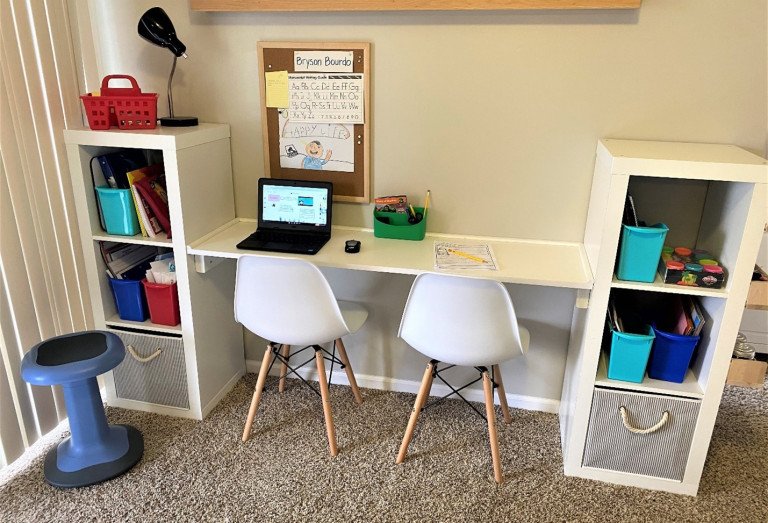At Home Learning Spaces: it’s about Function, Focus and Follow Through
Article | 11.18.2020Due to the COVID-19 pandemic, many families, including my own, have been compelled to create an at-home learning environment for our school-aged kids. Because of the seemingly overnight shift and the concern for health and safety, schools closed and required kids to hold virtual meetings and complete their schoolwork from the dining room table. It’s safe to say that for my three-year-old, six-year-old and nine-year-old, the dining room table provided a constant flow of distractions and wasn’t conducive to their learning.
Because of our experience, and as schools continue to face unplanned and erratic closures, I was determined to provide a better learning environment for my kids this time. I rearranged our underutilized playroom and used toy storage cubbies to create a designated workstation and learning space.
Going through this process, I personally have found that these three things seem to resonate with the way my kids learn:

Function: Sitting at the dining room table wasn’t functional. It was loud, distracting, and crowded. There was no personal space, no storage and too many activities taking place at once. The reconfigured workspace is much more functional. We worked with what we already had at home to mount a counter at a comfortable work height for my kids, provided a tackboard for ease of displaying the plethora of passwords and websites needed for each classroom, and gave each child their own individual cubbies for storage and to house supplies, from markers to notebooks and even headphones.
Focus: Like most kids their ages, mine are full of energy and continuously want to move. I was lucky enough to be gifted a Squircle active seating stool from Academia Furniture that I incorporated into their learning space. I often find my kids changing their posture and chair style throughout the day, sitting on the chair, perching on the stool or sometimes even standing, which helps them maintain focus on their assignments. It was also very apparent that having a designated workspace, which was not the dining table in the center of our home, helped tremendously with their focus and overall learning attitude.
Follow Through: This one is tough, and I still find myself occasionally not following our routine but overall, I have found that following through with making sure my kids sit at or at least near their designated workspace is crucial. Like the saying goes, give them an inch and they will take a mile. This saying is right in the sense of their schoolwork. I have found that they are much more likely to procrastinate, daydream, be mischievous with their siblings or not focus on schoolwork if they are not at their learning station.
I have worked hard to make it a habit to pick a time to “start” school and plant themselves in their learning environment, as it is making a difference daily for all of us. Although the future is uncertain, and I don’t know how long my kids will need to continue to utilize their at-home learning environment, I am confident that they will prevail and become more vital for having to practice patience, work through new technology skills and hold themselves accountable for their work. As a professional interior designer, understanding the importance of an ideal work environment and an excellent learning environment, which contributes to productivity and student achievement, I have provided my children an at-home learning environment that is supportive of their needs and helps contribute to their positive educational journey.

About the Author
Casey Bourdo is a Senior Interior Designer with Wightman. She and her husband Cory are raising three active children in Plainwell, Michigan. Her specialty areas include office, commercial, hospitality and educational spaces.
Services
